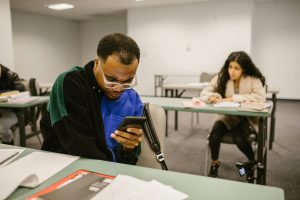Remote Learning 2.0: Lessons Learned and Path Forward
The COVID-19 pandemic has drastically changed the way we live and work, and one of the biggest shifts has been in the field of education. In just a few short months, remote learning has become the new normal, with schools and universities around the world shifting to online platforms. Now, as we enter a new school year, we are faced with Remote Learning 2.0 – an opportunity to learn from the lessons of the past and pave the path forward for a more effective and engaging remote learning experience.
The Challenges of Remote Learning 1.0
When the pandemic first hit, schools and universities were forced to switch to remote learning almost overnight. For many institutions, this was a brand new experience and came with a host of challenges. Teachers had to quickly adapt their lesson plans for online delivery, students had to cope with not being in a physical classroom environment, and parents had to juggle work and helping their children learn from home.
One of the biggest struggles with Remote Learning 1.0 was maintaining the same level of engagement and connection as in-person learning. Many students found it difficult to stay motivated and focused without the structure of a classroom and the physical presence of their teachers and peers. In addition, the lack of access to technology and reliable internet connection posed a significant barrier for some students, particularly those from low-income households.
Lessons Learned from Remote Learning 1.0
Despite the challenges, Remote Learning 1.0 also provided valuable lessons for educators, students, and parents. One of the main takeaways was the importance of digital literacy. With remote learning, students were suddenly expected to navigate different online platforms and tools, which required a certain level of digital competency. This highlighted the need for schools to integrate digital literacy into their curriculum and provide training and support for both students and teachers.
Another important lesson was the need for clear communication and expectations. With remote learning, the lines between school and home became blurred, and it was crucial for teachers to clearly communicate their expectations and guidelines for online learning. This not only helped students stay on track but also provided a sense of structure and routine in an otherwise uncertain time.
A Look at Remote Learning 2.0
As we embark on a new school year, educators are armed with the lessons learned from Remote Learning 1.0 and are ready to take on Remote Learning 2.0. Many schools and universities are implementing changes to make the online learning experience more effective and engaging for students.
One significant change is the use of technology to increase student engagement. Virtual classrooms, live stream lectures, and interactive learning platforms are just some of the ways that teachers are bringing the classroom experience online. By incorporating elements of gamification and collaboration, educators are able to replicate the interactive nature of in-person learning and keep students engaged and motivated.
In addition, institutions are working on providing equal access to technology and internet for all students. This might involve loaning out laptops or tablets to students in need or setting up community Wi-Fi hotspots in underserved areas. By addressing these issues, schools can ensure that all students have the same opportunities for learning, regardless of their socioeconomic status.
The Path Forward
Remote Learning 2.0 has forced us to think outside the box and find new ways to deliver education. While it may never replace traditional in-person learning, it has opened up a world of possibilities and has the potential to improve education in the long term. By embracing technology and continuing to learn from our experiences, we can pave the path forward for a more inclusive, flexible, and effective education system.
Conclusion
The shift to remote learning has not been without its challenges, but it has also brought about new opportunities for growth and improvement. As we navigate through Remote Learning 2.0, let us remember the lessons we have learned, embrace innovation, and work towards building a better education system for all students.






